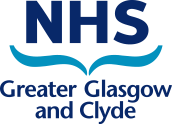4.9. Drugs used in parkinsonism and related disorders
4.9.1. Dopaminergic drugs used in Parkinson’s disease
Prescribing Notes:
This medicine commonly causes confusion and is best avoided (especially in the elderly).
Prescribing Notes:
The BNF notes that the total daily dose of the carbidopa proportion of these products should be at least 70mg.

Restrictions:
Restricted to specialist initiation. Apomorphine is restricted to use in patients with mid/late stage Parkinson’s disease under consultant supervision only.

Restrictions:
Restricted to specialist use only for the treatment of advanced levodopa-responsive Parkinson's disease with severe motor fluctuations and hyper-/dyskinesia when available combinations of Parkinson medicinal products have not given satisfactory results.
Prescribing Notes:
The current preferred brand of carbidopa with entacapone and levodopa is Stanek®

Restrictions:
Restricted to specialist use only in patients not eligible for deep brain stimulation
Prescribing Notes:
For the treatment of advanced levodopa-responsive Parkinson’s disease with severe motor fluctuations and hyperkinesia or dyskinesia when available combinations of Parkinson medicinal products have not given satisfactory results.
To be used in preference to Duodopa.

Restrictions:
The use in Parkinson’s disease is restricted to use on the advice of consultants with a special interest in Parkinson’s disease or movement disorders. The use of pramipexole in restless legs syndrome (RLS) is restricted to those patients with severe RLS (symptoms resulting in significant disruption to sleep and impairment of daily living.
Prescribing Notes:
Pramipexole dosing can be expressed as either base or salt and this should be clearly documented when prescribing.

Restrictions:
Restricted to use on the advice of consultants with a special interest in Parkinson’s disease or movement disorders. Use in restless legs syndrome is restricted to those patients with severe RLS symptoms resulting in significant disruption to sleep and impairment of daily living.
Prescribing Notes:
The preferred brand of modified-release ropinirole in NHSGGC is Ipinnia XL®

Restrictions:
Restricted to specialist initiation for patients where the transdermal route would facilitate treatment. Treatment for moderate to severe idiopathic Restless Leg Syndrome (RLS) in adults is restricted to patients with a baseline score of 15 points on the International Restless Legs Scale (IRLS) and who do not respond to or tolerate oral preparations.

Restrictions:
Restricted to specialist initiation only.
Prescribing Notes:
The selegiline melt formulation remains non-formulary.
4.9.2. Antimuscarinic drugs used in parkinsonism
4.9.3. Drugs used in essential tremor, chorea, tics, and related disorders

Restrictions:
Restricted to specialist use only. It remains non-formulary for the indications detailed in the prescribing notes below.
Prescribing Notes:
Three brands available (Dysport®, Xeomin® and Botox®). The doses are specific to the preparations and they are not interchangeable. Prescribe by brand name.
For uses in urology, see the entry in section 7.4.2 and for use in migraine see section 4.7.4.2
The following indications are not recommended for use in NHS Scotland by the SMC and remain non-Formulary:
- Treatment of focal lower limb spascticity associated with stroke
- Treatment of focal spasticity of lower limbs due to traumatic brain injury (Dysport®)
- Treatment of focal spasticity of the lower limb affecting the ankle joint (Xeomin®)
- For cosmetic reasons (e.g. temporary improvement in the appearance of moderate to severe vertical lines between the eyebrows seen at frown)
4.9.4. Other CNS drugs

Restrictions:
Restricted to specialist use for the symptomatic treatment of chronic sialorrhoea due to neurological disorders in adults.
Prescribing Notes:
For other uses of botulinum toxin A, see other Formulary entries.

Restrictions:
The treatment of hereditary transthyretin-mediated amyloidosis (hATTR amyloidosis) in adult patients with stage 1 or stage 2 polyneuropathy is restricted to specialist use only on the advice of the National Amylodosis Centre. It is available via the ultra-orphan pathway with reassessment by SMC following 3 years of data collection. Appropriate paperwork needs completing before prescribing to ensure registration on the national risk sharing scheme.

Restrictions:
The treatment of hereditary transthyretin-mediated amyloidosis (hATTR amyloidosis) in adult patients with stage 1 or stage 2 polyneuropathy is restricted to specialist use only on the advice of the National Amylodosis Centre.
Prescribing Notes:
Available via the Ultra Orphan Pathway with reassessment by SMC following 3 years of data collection. Appropriate paperwork needs completing before prescribing to ensure registration on the national risk sharing scheme.

Restrictions:
Restricted to specialist use for the treatment of hereditary transthyretin-mediated amyloidosis (hATTR amyloidosis) in adult patients with stage 1 or stage 2 polyneuropathy.
Prescribing Notes:
This is a sub-cutaneous 3 monthly injection. Designated as an ultra-orphan drug. Appropriate paperwork needs completing before prescribing to ensure registration on the national risk sharing scheme.

